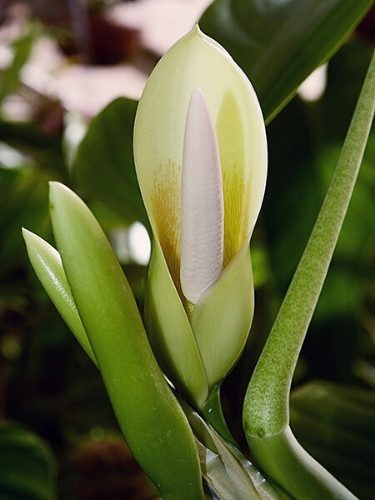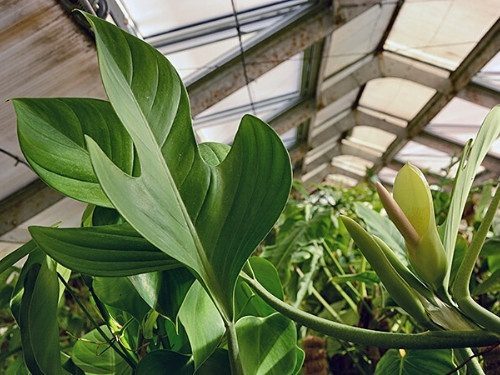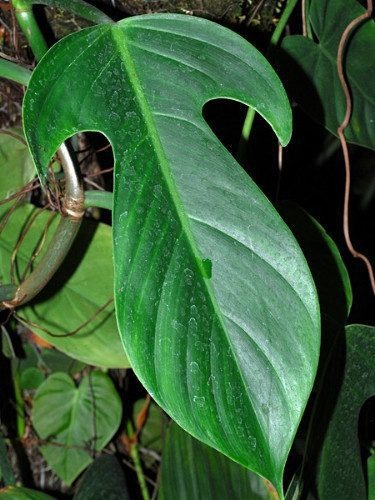The fiddleleaf philodendron (Philodendron panduriforme) is a herbaceous, hemiepiphytic, rhizomatous, and perennial species, known for its distinctive three-pointed foliage, often likened to the shape of a horse’s head or a violin (fiddle). Native to the Amazon basin, it is not only an epiphyte but also a climber, like most philodendrons. It features an ascending to decumbent rhizome with aerial roots that aid in attaching to tree trunks. Its leaves emerge from the rhizome, protected by cataphylls, and are supported by long petioles.
These leaves are leathery, smooth, curved downward and outward, three-lobed, and green in color. It’s important to note that the plant’s initial leaves differ from the mature form, being more rounded and without lobes. There are two varieties of this species: Philodendron panduriforme var panduriforme and P. panduriforme var reichenbachianum, with the latter having broader leaves and proportionally shorter lobes.

Its inflorescence is of the spadix type, with paired light green spathes tinged with red and a creamy interior. Occasionally, it produces berry-like fruits. It’s common to confuse P. panduriforme with P. bipennifolium. However, the former is distinct from the latter due to having only three lobes.
This plant thrives when cultivated in pots, in well-lit interiors, preferably near east or west-facing windows. This way, it decorates and brings a tropical atmosphere to rooms, offices, balconies, clinics, entry halls, and more. The fiddleleaf philodendron, as its name suggests, possesses a whimsical and intriguing shape, with textures and cutouts that stand out among other species. In gardens, it serves as a vigorous climber, covering tree trunks.
It’s also suitable for vertical gardens. The fiddleleaf philodendron is slow-growing and easy to cultivate, requiring minimal maintenance, mainly involving cleaning the dust off its leaves using a clean, damp cloth or a gentle shower with cold water. Pruning should be limited to removing dead, dry, or yellowed leaves.

It should be grown in partial shade or filtered light and appreciates well-draining substrates rich in organic matter. Composing the substrate with moss, peat, pine bark, vermiculite, or perlite can promote efficient drainage while retaining moisture.
Alternatively, use mixes suitable for anthuriums. Be cautious when exposing it to direct sunlight, as sun rays can lead to leaf burns. Watering should be spaced to allow the substrate to dry slightly on the surface, avoiding over-watering. It thrives in high humidity, so using an electric humidifier or placing water-filled trays nearby can supplement humidity and enhance its growth. Extremely hot or cold temperatures can stunt the growth of the fiddleleaf philodendron; thus, the ideal cultivation temperature ranges between 16 to 24°C (61 to 75°F).
Repot every two to three years to refresh the substrate. Remember to provide suitable support for the plant to climb and develop mature, lobed leaves. Fertilization should be done moderately on a monthly basis during the growing season, i.e., spring and summer, using slow-release or organic fertilizers, following the manufacturer’s instructions regarding dosage. Propagation of the fiddleleaf philodendron can occur through cuttings, air layering, or seeds during the spring.


